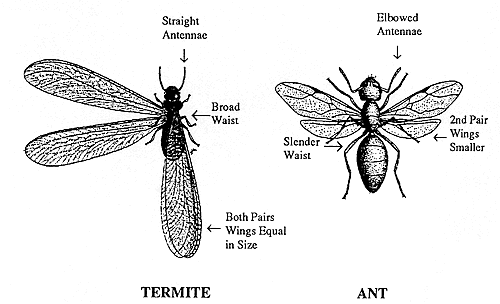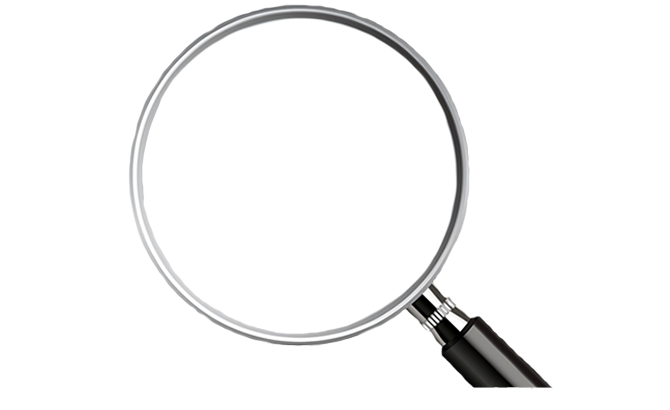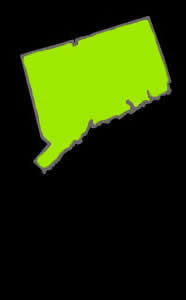Ant Control throughout Connecticut
Carpenter Ant Control Black Ant Control
Ant Control CT. Carpenter ants or Black ants in Connecticut can be recognized from other insects because they have a narrow waist with one or two joints (nodes) between the thorax and abdomen. Also, carpenter ants have elbowed antennae. Winged reproductives have four wings with the first pair being much larger in size than the hind pair.
Carpenter Ants or black ants are frequently confused with termites in CT. However, termites have a broad waist between the thorax and the abdomen. Termite reproductives have four wings of equal size.
Carpenter Ant / Black Ant Biology
Carpenter Ants are social insects. Two castes (workers and reproductives - queens and males) can be found in most colonies. Worker ants, which are sterile females, are seldom winged. They often are extremely variable in size and appearance within a given species (monomorphic - one form; dimorphic - two forms; polymorphic - many forms). The function of the worker is to construct, repair, and defend the nest; and feed the immature and adult carpenter ants of the colony, including the queen.

Queens normally have wings but lose them after mating. The primary function of the queen carpenter ant is reproduction; however, in some of the more highly specialized carpenter ants the queen cares for and feeds the first brood of workers on her salivary secretions.
The male carpenter ant is usually winged and retains its wings until death. The sole function of the male carpenter ant is to mate with an unfertilized female reproductive. After mating occurs, the male carpenter ant dies. Males are produced in old or very large colonies where there is an abundance of food. After reaching maturity, the male carpenter ant usually doesn't remain in the colony very long.
Carpenter Ants in CT have an egg, larva, pupa, and adult stage. Eggs are almost microscopic in size and hatch into soft legless larvae. Larvae are fed by workers on predigested, regurgitated food. Most larvae are fed liquids, although some older larvae are able to chew and digest solids. The pupa resembles the adult except that it is soft, uncolored and immobile. In many ant species the pupa is in a cocoon spun by the larva. Six weeks to 2 months are required for development from egg to adult in some species.
Carpenter Ants in CT establish new colonies by two main methods: flights of winged reproductives and budding. The most common method is for male and female reproductives to leave the nest on mating flights. The mated queen constructs a cavity or cell and rears a brood unaided by workers. The small first brood workers then forage for food. The colony grows in size and numbers as more young are produced.
Budding occurs when one or more queens leave the nest accompanied by workers who aid in establishing and caring for the new colony. Some of the most difficult ant species to control spread colonies by budding.
CT Carpenter Ant / Black Ant Food Preferences
Most carpenter ants in CT eat a wide variety of foods. Carpenter ants use scouts to locate food. When a scouting ant finds promising food, she carries it or a piece of it back to the nest. Some ants leave scent trails that others can follow to the food source. Carpenter ants require water and will travel some distance for it if necessary. Workers are able to bring water to the colony in their stomachs.
CT Carpenter Ant Control, Black Ant Control
Although cleanliness may not control a carpenter ant infestation in CT by itself, it is a good place to start. Any type of food or food particles can attract and provide food for carpenter ants. Store food in tight containers. Remove plants that can attract ants or control aphids, whiteflies and other insects that produce honeydew.
Reduce moisture sources, including condensation and leaks. Carpenter ants in CT are primarily attracted to moist wood. Any possible sources of excess moisture found within a structure needs to be fixed. Another way to minimize the problem is to remove any vegetation, such as tree limbs, that are too close to or touching the house. Carpenter ants can also enter houses along utility lines. Properly sealed points of entry will eliminate this mode of access. Any other cracks or crevices in the structure are possible entry points and should be sealed. Firewood should be stored away from the house and off the ground if possible.
Often, the carpenter ants you see inside your home are simply foraging for food, and you may not see large numbers of them. Foraging workers can travel 100 yards from the nest for food and can be found wandering throughout your house.
There are many ways to control CT carpenter ant infestations using insecticides. One thing to remember is that the earlier a carpenter ant problem is handled, the less insecticide will be needed to control it. The treatment method will depend on where the carpenter ants are located. If carpenter ants are living in solid wood or walls, one treatment is to drill small holes in the wood directly into the ant galleries and inject a dust or aerosol insecticide. If carpenter ants are coming into a structure from the outside and the nest cannot be found, an outside perimeter treatment with an insecticide spray will provide some control.
There are bait products to control CT carpenter ants as well. In some cases, baits appear to work very well, and in others, the baits are not very effective. One problem may be that carpenter ants change their food preference with the seasons. The same bait may not be attractive to the ants at all times of the year.
Carpenter ant control in CT can be very difficult for an untrained person which is why you may need to hire a qualified pest control professional or exterminator to handle the problem for you.
CT Carpenter Ant Inspection
Carpenter ant inspection. Location of the nest is the key to control because carpenter ants are social insects. Large numbers of individual carpenter ants can be killed without ever solving the problem.
Keep a record of where carpenter ants have been seen in your CT home. Some carpenter ants follow definite trails. If possible, follow these trails to the nest. Placement of attractive materials, such as jelly, oils, protein and other materials can attract large numbers of carpenter ants so they can be followed to their nest.
Often children like to watch ants and can be very useful in tracing their trails. Outdoors, carpenter ant nests can often be located by seeing ant hills on the ground. Some ants deposit earth on the soil surface when they construct the nest. Nest may also be constructed under sidewalks, driveways and patios, or in decaying logs or tree trunks.
Indoors, carpenter ants may nest in walls, behind a baseboard or under the house. Often ant trails enter through a crack but the nest may be some distance away. Sometimes carpenter ants may also nest in decayed or rotting wood in the house.
Copyright Information
This document is copyrighted by the University of Florida, Institute of
Food and Agricultural Sciences (UF/IFAS) for the people of the State of
Florida. UF/IFAS retains all rights under all conventions, but permits free
reproduction by all agents and offices of the Cooperative Extension Service
and the people of the State of Florida. Permission is granted to others to use
these materials in part or in full for educational purposes, provided that
full credit is given to the UF/IFAS, citing the publication, its source, and
date of publication. 11/29/04.
Call our ant control CT specialists today to schedule and appointment 888-558-1574.



